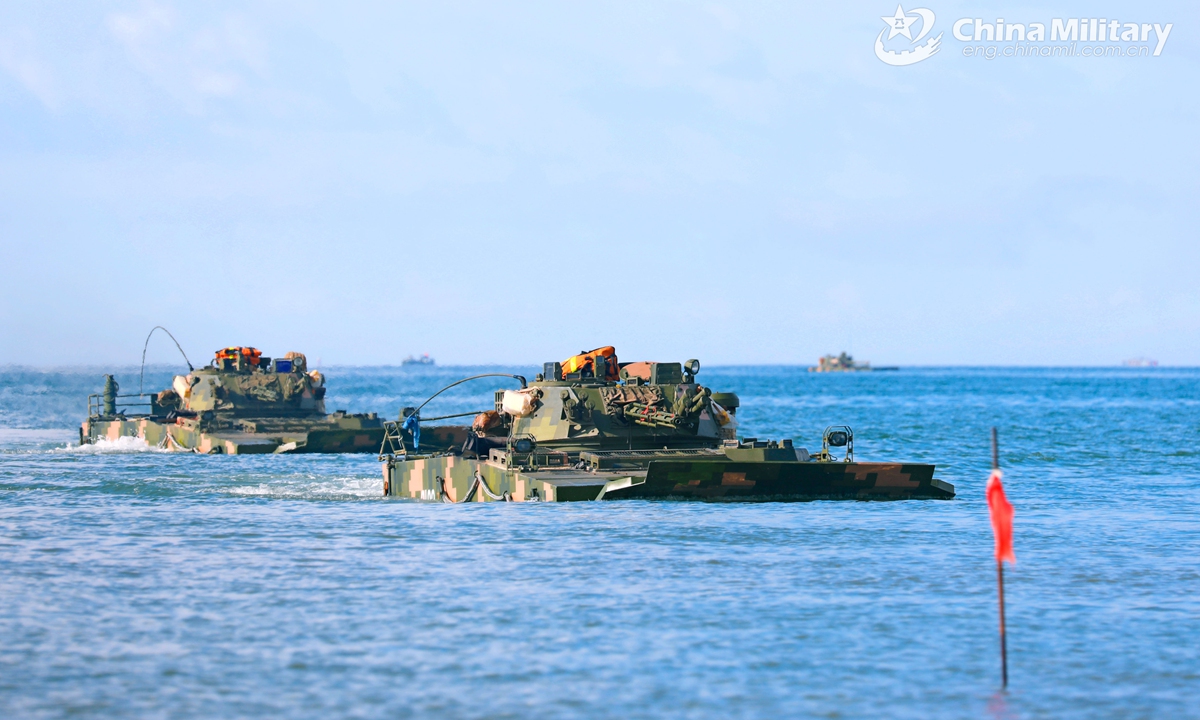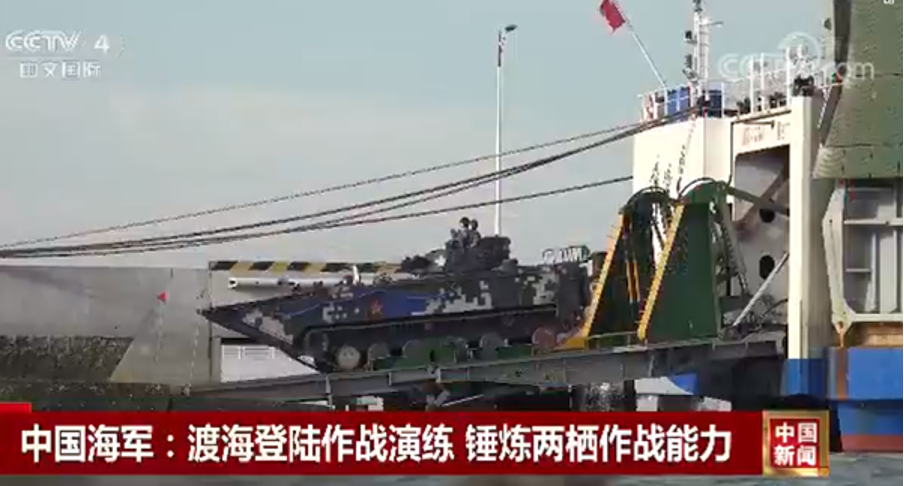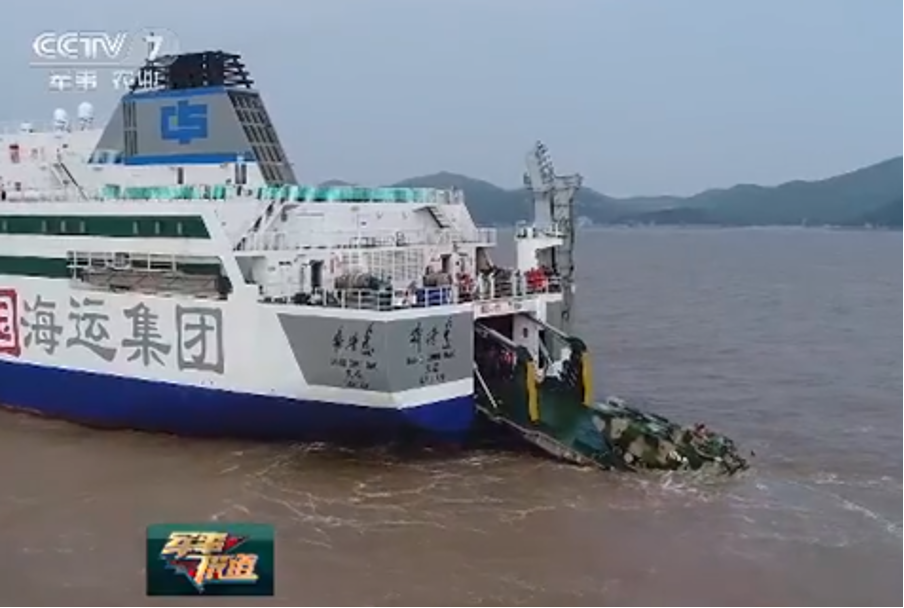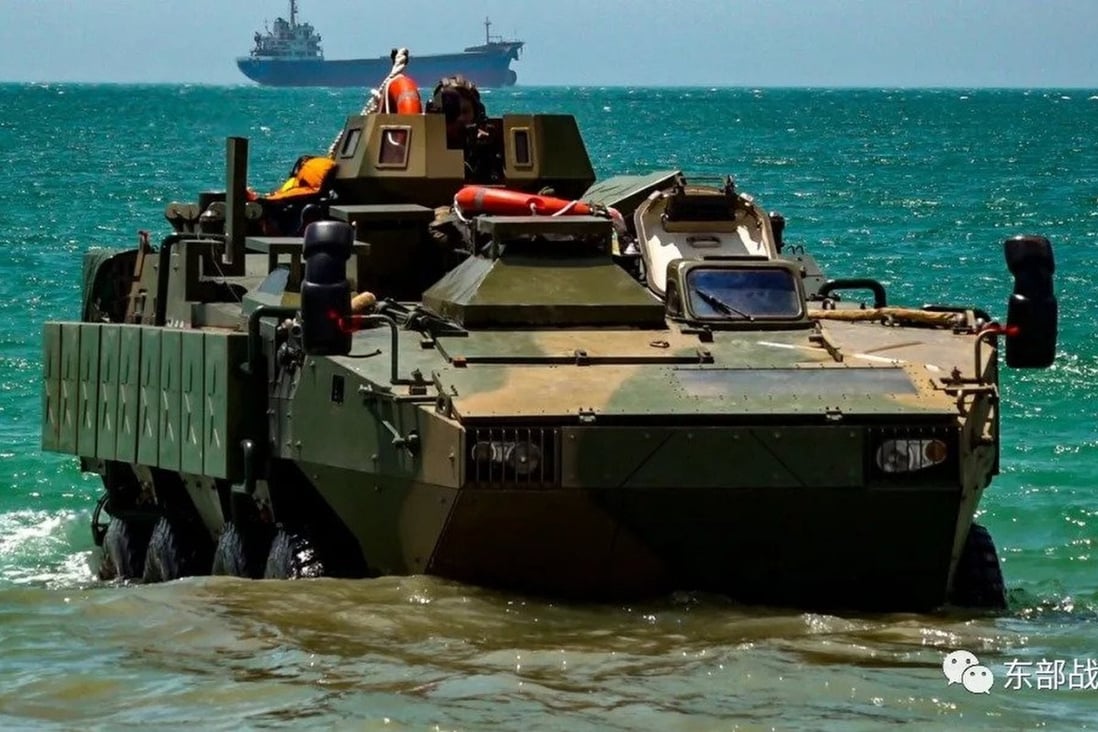China is reportedly modifying civilian vessels for military use for the potential invasion of Taiwan. Analysts have highlighted how China’s PLA has been increasing its amphibious assault capabilities in view of the US’ “growing interference” in the Taiwan issue.
According to a report published in the Jamestown Foundation’s China Brief by Conor Kennedy, an instructor at the US Naval War College’s China Maritime Studies Institute, a roll-on/roll-off ferry known as ‘Bang Chui Dao’ in China has been fitted with a modified ramp able to launch and recover amphibious armored vehicles while offshore.
Bang Chui Dao is a 15,560-ton vessel owned and operated by COSCO Shipping Ferry Company since 1995.

The vessel, which operates in a key ferry route in northern China across the Yellow Sea and Bohai Gulf, has been participating in training activities off the southern Chinese city of Zhanjiang in Guangdong province, according to Chinese media reports.
This development throws light on China’s desperate attempts to address the shortfall of amphibious assault ships which are critical in launching a full-scale invasion of Taiwan.
Using Ferry for Military Missions
This capability means the ship can launch and recover vehicles without dedicated port facilities. This is in contrast to typical RO/RO vessels, which have straight hydraulic ramps for vehicles to drive on or off while ships are in port, Defense News reported.
The Jamestown report published the details of how China managed to convert the local ferries into military armored vehicles.

A modified ramp is driven directly by two large hydraulic cylinders and two support arms. When conducting launch and recovery, these are connected between the top of the hydraulic mounting assemblies on the inner ramp and the top of the freight deck threshold to provide the strength and leverage required to deploy the ramp into the water and withstand sea action, the report said.
The support arms also act as preventers at maximum extension, while the ramp is kept rigid by the hydraulic cylinders. A longer outer ramp flap has also been added, controlled by another set of hydraulic cylinders mounted on the underside or backside of the ramp.
These help to provide strength at the end of the outer ramp and to allow vehicles to get on the inner ramp smoothly, it added.
The Jamestown report even narrowed down the location of the amphibious training area to Dianbai County. The footage from the exercise showed the RO/RO vessel operating a PLA Marine Corps ZTD-05 amphibious armored vehicle.

Chinese local news outlets have reported on civilian ferries participating with the People’s Liberation Army (PLA) with the state-run television station CCTV reported that “large groups of different types of amphibious armored vehicles and military trucks were loaded onto civilian ships as part of the transport mission” at the exercise.
The Bang Chui Dao took part in PLA amphibious exercises last year as well.
Identifying that 63 vessels could potentially be converted by China, the report noted how China is increasing its amphibious assault capabilities, which is significant for its ability to mount an all-out invasion of Taiwan.
The Taiwan Question
The transformation from a civilian ferry to conducting military missions, seen from a broader perspective, indicates China’s “grand strategy” to unite Taiwan with the mainland.
The communist country has followed a ‘One-China Policy’ claiming sovereignty over Taiwan ever since the nationalist government fled to the island in 1949.
In his speech at the centenary celebrations of the Communist Party of China (CPC), President Xi Jinping mentioned that resolving the Taiwan question and realizing China’s complete reunification is a “historic mission and an unshakable commitment of the Communist Party of China.”
“We must take resolute action to utterly defeat any attempt toward “Taiwan independence,” and work together to create a bright future for national rejuvenation. No one should underestimate the resolve, the will, and the ability of the Chinese people to defend their national sovereignty and territorial integrity,” he added, warning the lobbying of the international community behind the democratically governed island nation.
After repeated incursions of the Taiwanese airspace, the Chinese began a series of amphibious landing exercises in the waters off the eastern coast of Fujian province, closer to the Taiwan Strait.
The drills were conducted after the US military’s C-130 transport aircraft carrying three US senators and 750,000 vaccine doses landed at the Taiwan Taoyuan International Airport on July 19.
However, experts claim that China lacks the adequate number of amphibious ships to transport potentially millions of troops Beijing would mobilize for an all-out invasion of Taiwan, as reported by the Eurasian Times.
China too seems to be aware of this problem, as it is developing three Type 075 amphibious assault ships, the third being launched this year in January.

“China has urgent strategic and tactical needs in amphibious assault ship development; that is, it requires such warships to safeguard territorial integrity and sovereignty in the island of Taiwan and the South China Sea,” state-run Global Times reported.
Now with this technology to use civilian ferries for military purposes, it seems that China has found a way to cover for the shortfall.
“The nation [China] could potentially increase its [cross-Taiwan Strait] sealift capacity immensely, removing one of the major obstacles to [an] invasion of Taiwan,” Thomas Shugart, an adjunct senior fellow at the Center for a New American Security told Defense News.




